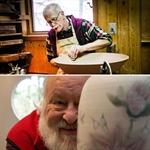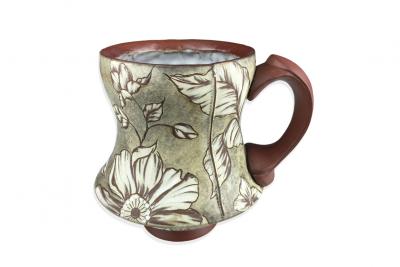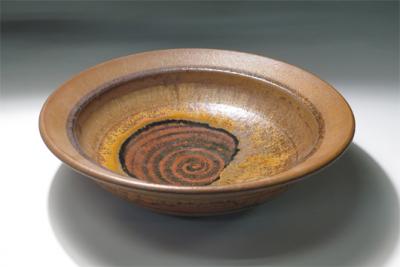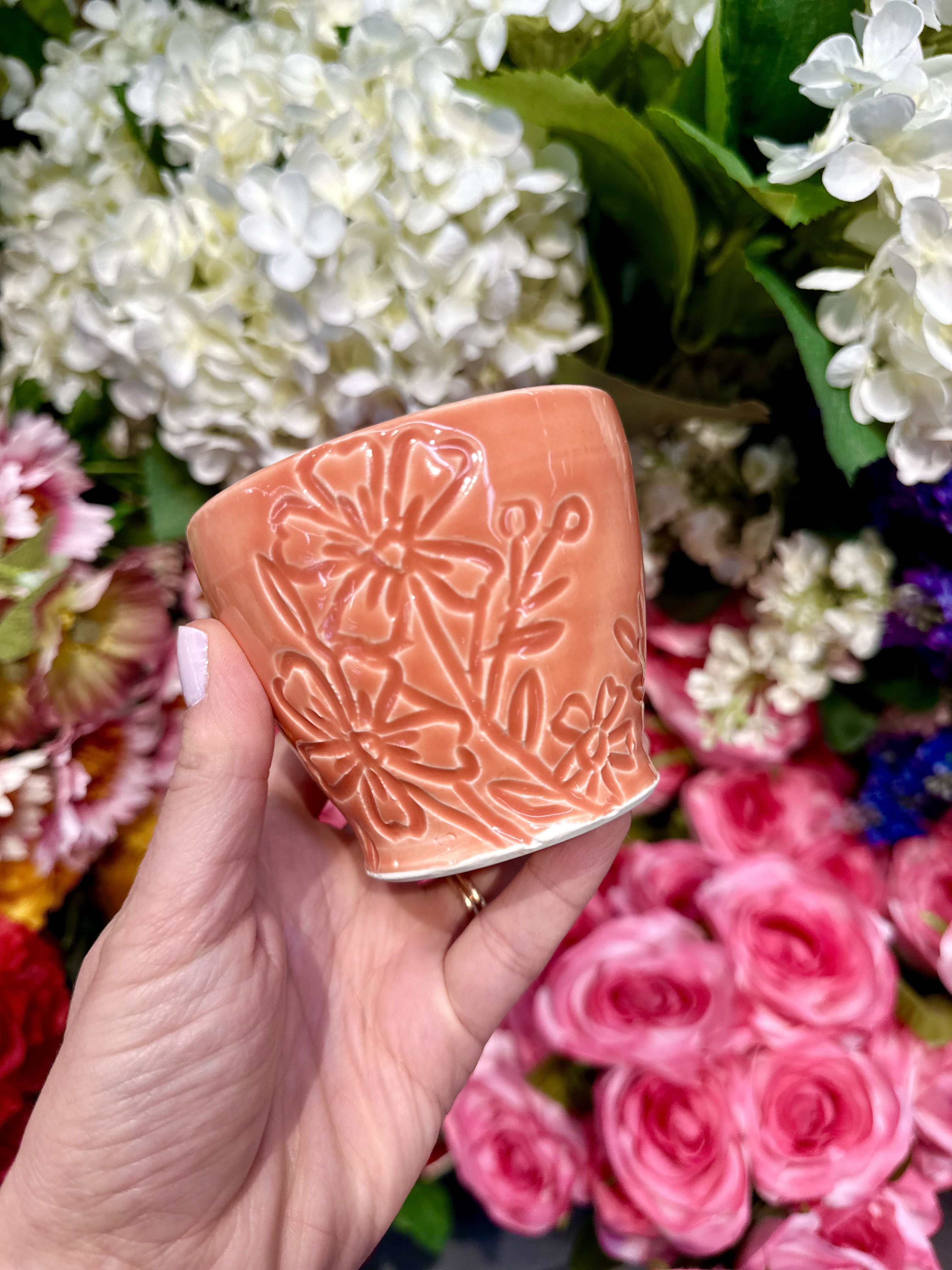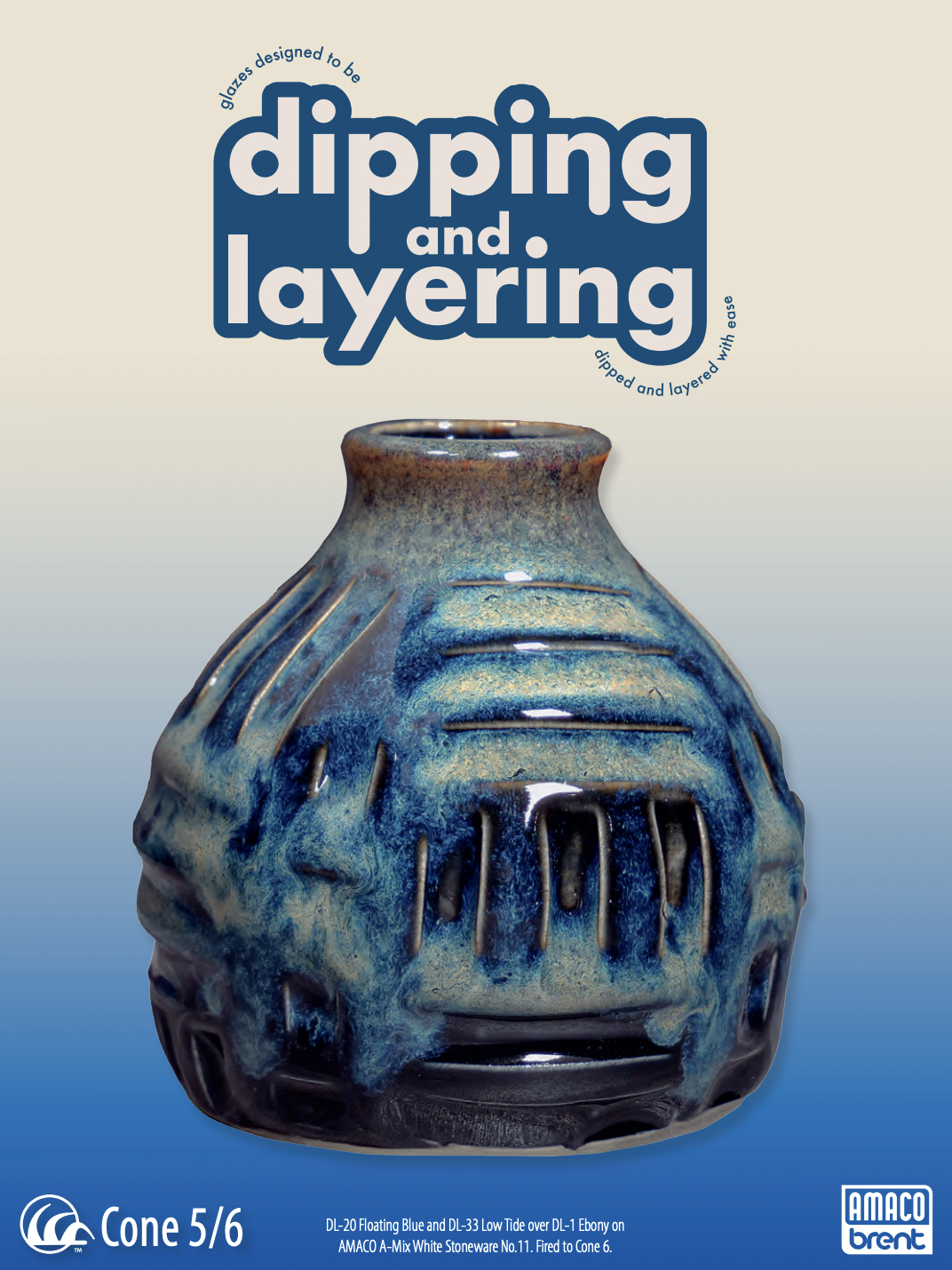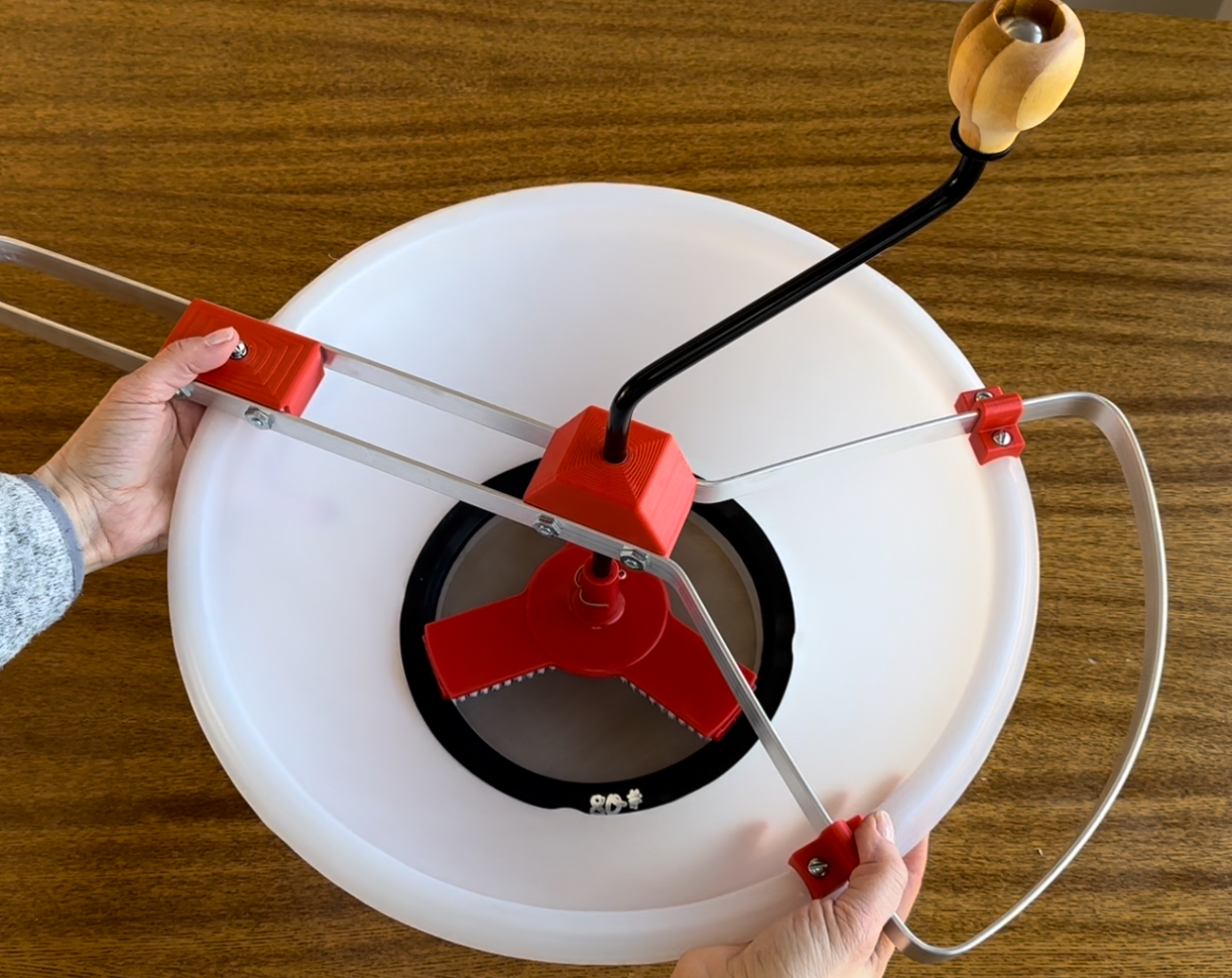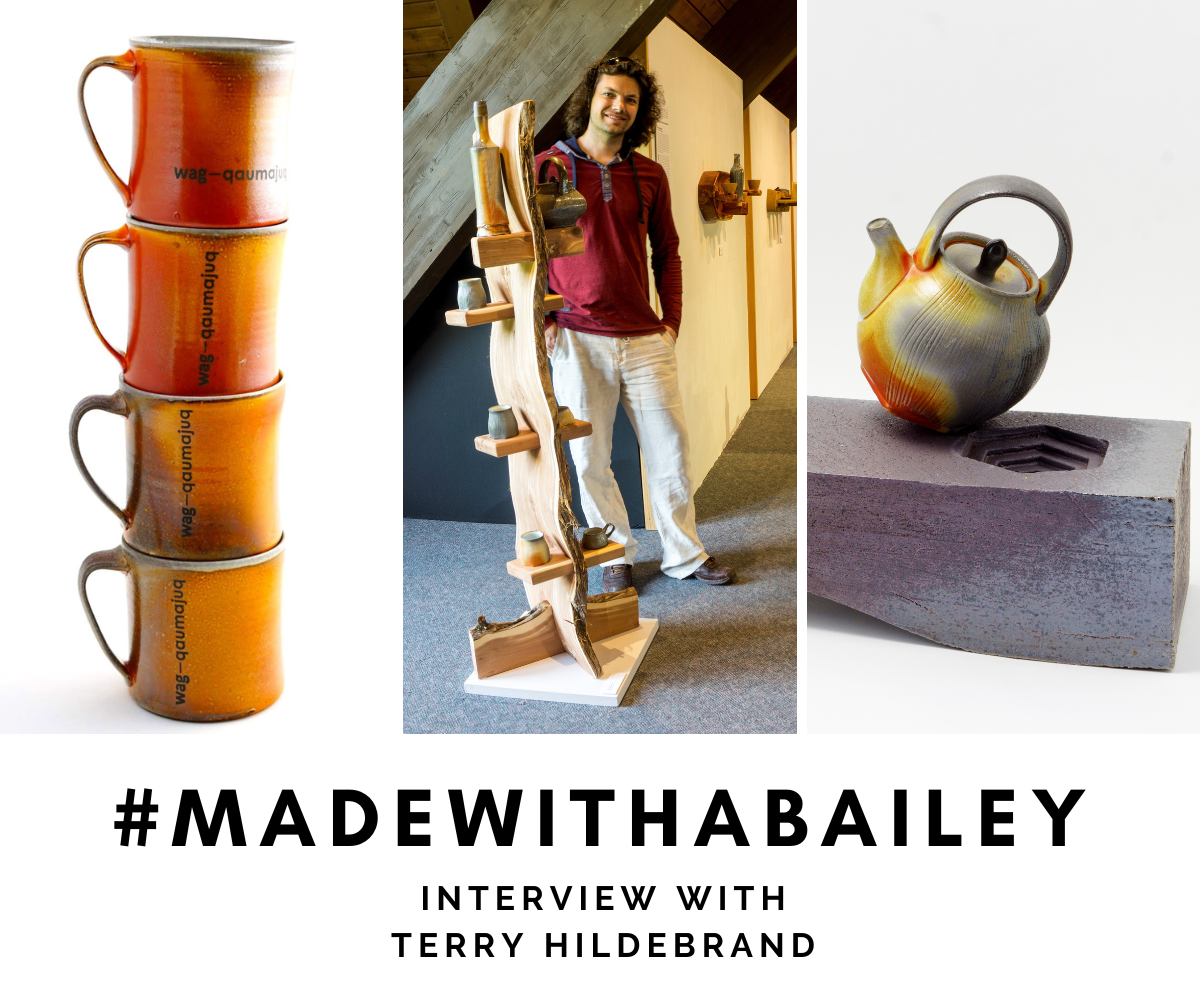Warren MacKenzie

Warren MacKenzie at the treadle wheel in his Minnesota studio, Photo: Discover Goldmark
American pottery legend, Warren MacKenzie, left this world on December 31, 2018, at the age of 94. His life was a rich tapestry of experiences from which he created an enormous body of work as a potter. He also taught students for two generations. It could be said that Warren MacKenzie was one of Bernard Leach's most successful and influential students. After reading Leach’s “A Potters Book” in 1947, Warren and his wife Alix set sail from the US to visit Leach in Saint Ives, England. Both Warren and Alix had been studying ceramics at the Chicago Art Institute but felt something was missing in their education. 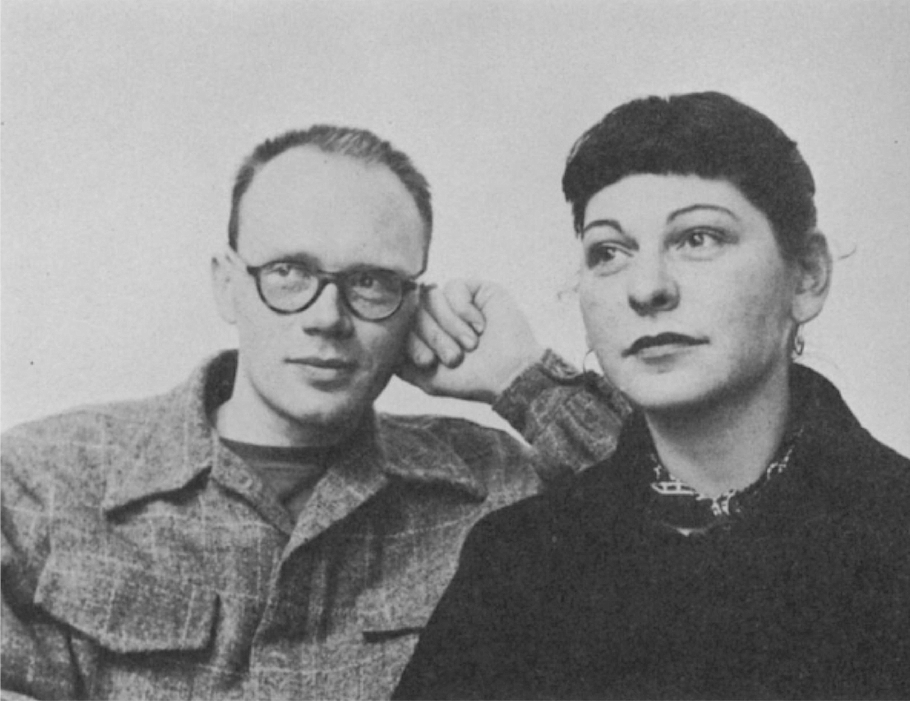
Warren and Alix, Photo: Everday Art Quarterly, No. 27, 1953
Bernard Leach was a well known and well-established potter and nearly 40 years their senior. He had studied and refined both English craft traditions and the clay traditions of Japan, Korea, and China. At the time, Leach’s workshop was making an astonishing body of work. Leach had a vibrant and successful practice and had somehow merged the practical with the philosophical and had created a lifestyle that was attractive to both of the MacKenzies. After a two week visit the MacKenzies won Leach over and he invited them back to Saint Ives the following year. Warren and Alix apprenticed at the Leach pottery for 2 ½ years beginning in 1949.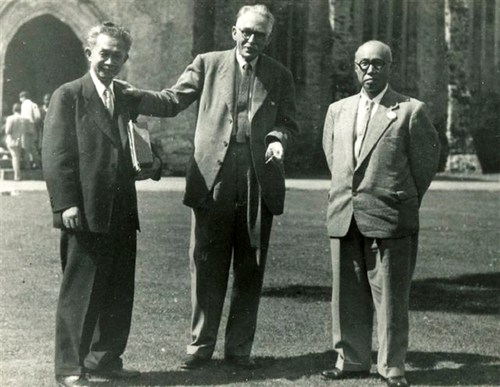
Bernard Leach with Shoji Hamada & Soetsu Yanagi, Dartington 1952, Photo: LeachPottery.com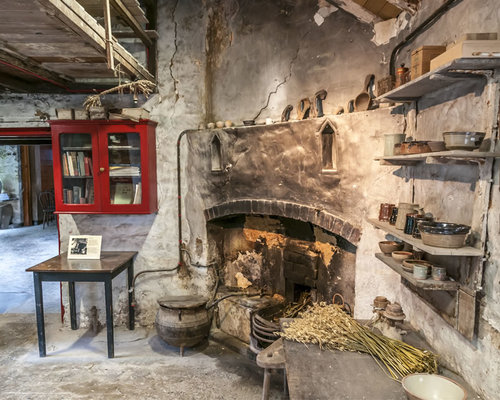
The old pottery fireplace at Leach Pottery, Photo: LeachPottery.com
There is no doubt this experience had a profound effect on both Warren and Alix. Not only did they learn to make pots but they spent a lot of time with Benard Leach, the man. It is not widely known that they lived with Bernard those 2 ½ years. As Warren noted, Leach lived and breathed pots. Leach saw his life as a combination of art, philosophy, craft, design, and entrepreneurship. Leach had made himself a kind of arts and crafts hero who sustained himself through creative enterprise. Warren and Alix saw that Leach made an inexpensive range of domestic ware with a sideline of making artwork which sold at much higher prices.
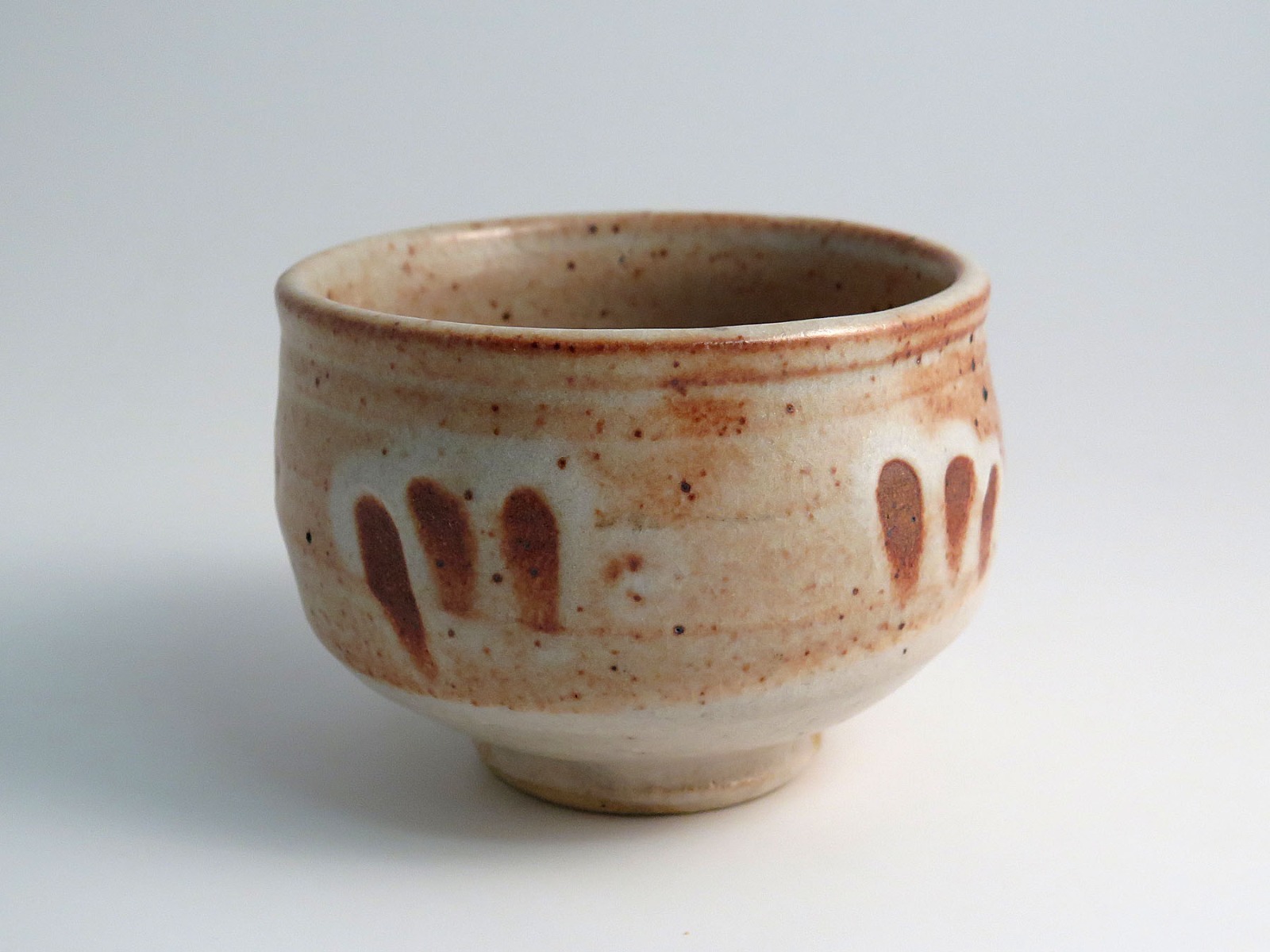
Warren MacKenzie Teabowl from the Bailey Collection of Contemporary Ceramics, Photo: Jim Bailey
The MacKenzies never wanted to be rigid production potters. They felt work should evolve and never be exactly repeated. They took away from the Leach experience the idea of creating work that was simple and well made and had the essence of the maker’s hands and spirit in the work. Having met Shoji Hamada and Yanagi Soetsu through Bernard ultimately shaped what would be a lifetime passion for inexpensive studio pottery intended to be used and loved by others.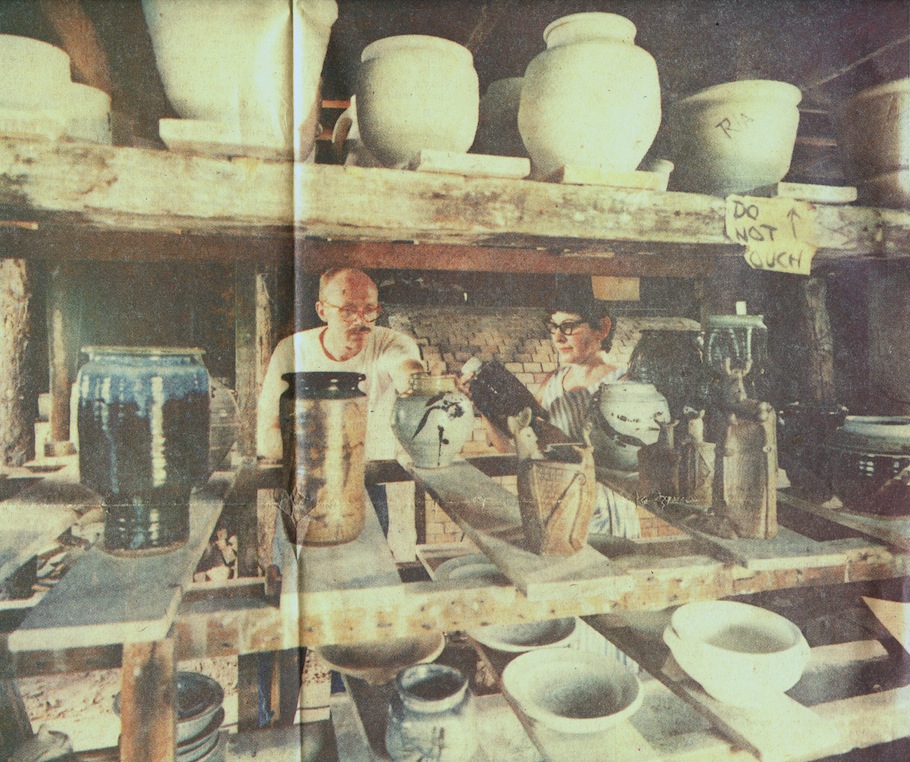
Warren and Alix MacKenzie in their Stillwater studio. Printed in the September 10, 1961, issue of the Minneapolis Sunday Tribune. Photo: Wayne Bell
Warren and Alix returned to the States in 1949 to establish their own pottery in Stillwater, Minnesota. It started simply, but over time they were able to establish a good client list. A family was started and as Alix was raising the children it became necessary for Warren to teach. He found permanent work at the University of Minnesota where he taught for over 35 years. Sadly, Alix passed away from cancer at the young age of 40 in 1962. Warren noted in an interview after her death what a good potter she was, that she was a much better decorator than he was and often saved some of his mediocre pots with her easy and fluid brushwork. Warren continued to teach at the University of Minnesota and along with Curtis Hoard built the ceramics department into a dynamic world-renowned learning center.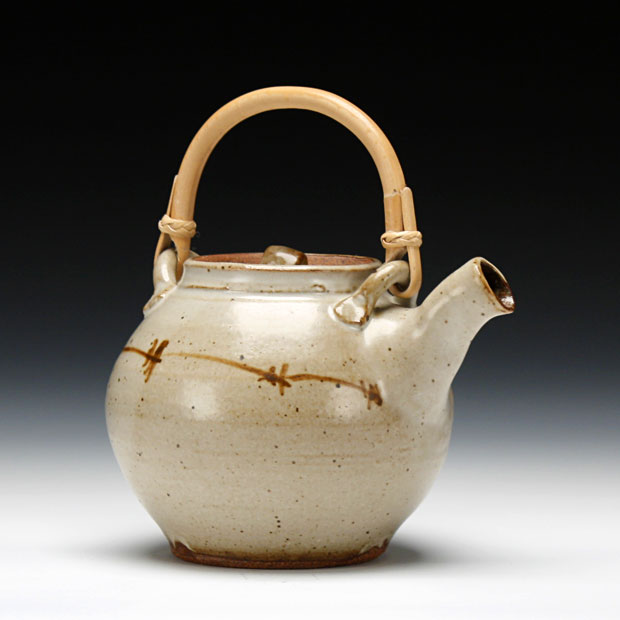
Teapot, Photo: Schaller Gallery
Warren’s ability to impart knowledge and inspire his students is legendary. Because of his influence, many of his students set up their studios in the Saint Croix area of Minnesota. This area is often referred to as Mingei-sota because of Warren’s love of Mingei which refers to the Japanese “Arts of the People”. As well as being influenced by Shoji Hamada, Warren was also inspired by Yanagi Soetsu. Yanagi Soetsu declared that everyday pots should be saved and revered and that the “unknown potter” as covered in his book, The Unknown Craftsmen, emphasized the importance of serving the needs of his community first. It is perhaps why Warren chose for many years not to sign his work.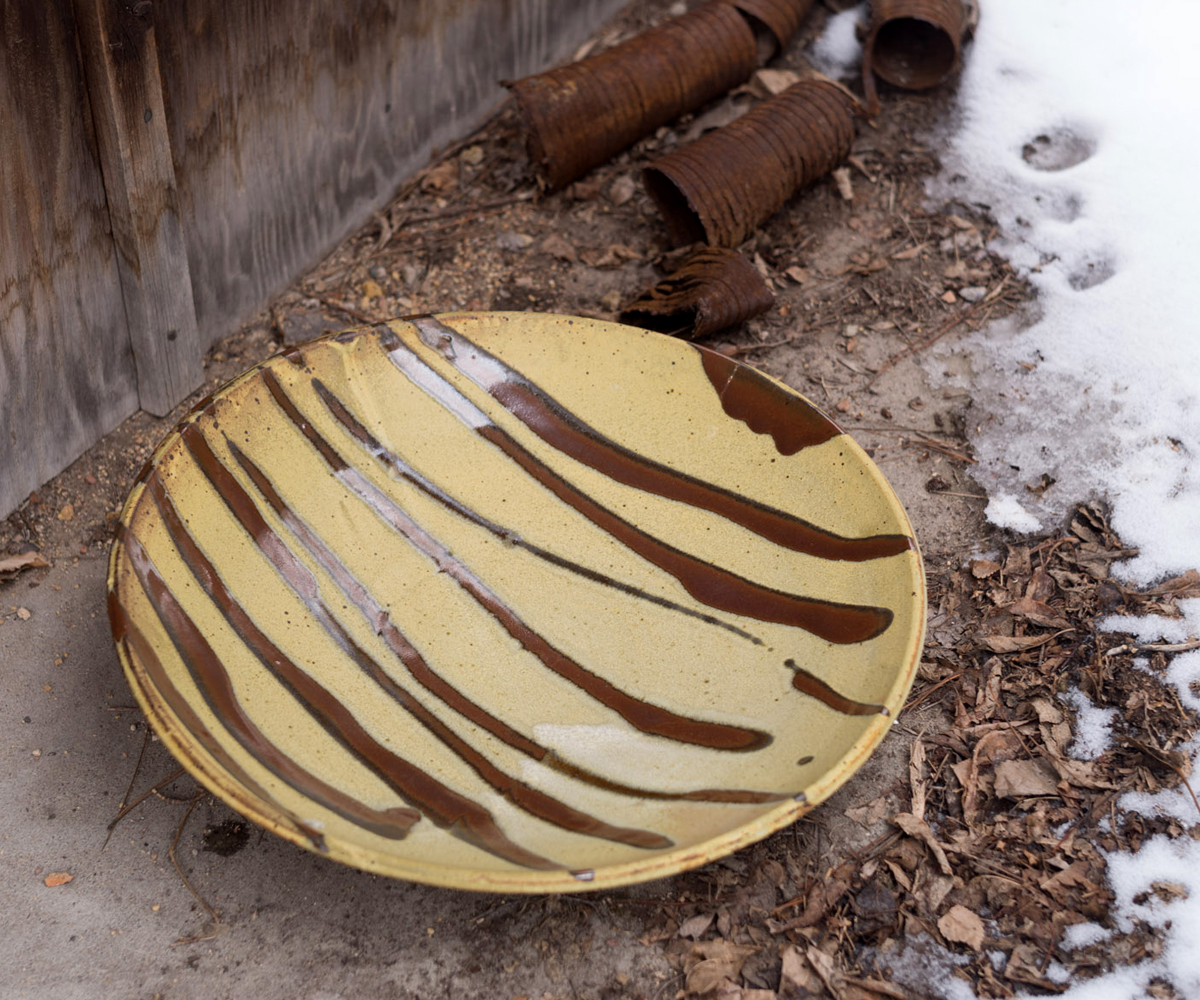
Large platter with ladled decoration, reminiscent of Hamada’s own trail decoration, Photo: Discover Goldmark
In 1984, Warren remarried Nancy Spizter. She was an accomplished fiber artist and together they shared a studio and showed their work. She died at the age of 80 in 2014. Warren continued to make sturdy lively pots to the very end of his life. He will be deeply missed, but his legacy lives on through his work and his many students. MacKenzie’s work can be found in museums and private collections across the globe. During his lifetime he was also the recipient of many prestigious awards.
In life there is idealism and then there is reality. I think Warren MacKenzie did a good job holding on to both. For Warren, the reality was understanding that the world is a complicated place. Warren’s idealism allowed him to make the beautiful, simple, everyday pots that he is known for. He was able to sell his work at very modest prices throughout most of his life from his studio. The reality of this situation led him to take a teaching position which gave him a way to continue making his work on his own terms. His idealism was taught to a new generation of makers at the University of Minnesota and through his workshops. His students each had to find a way to keep that magic alive while figuring out ways to survive in the world. Another reality was that toward the last part of his life he had to close his showroom/gallery because people were buying up his work at modest prices and then reselling it at much higher prices. This upset Warren and he ended up selling his work only in a select few galleries. But, the world had already decided that his work was much more valuable than he ever thought possible.
-Anne Bailey




